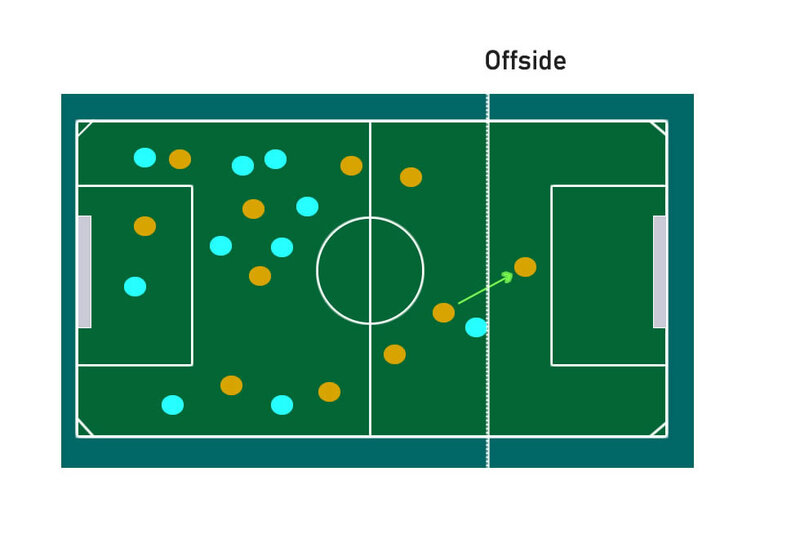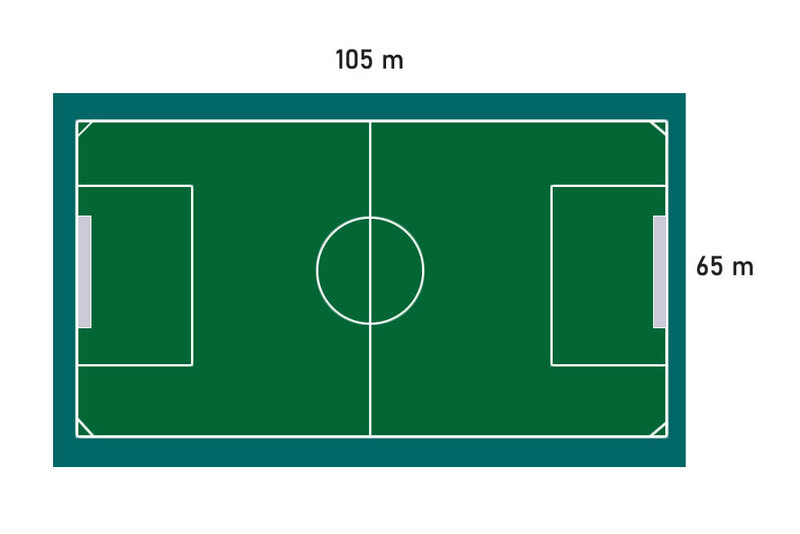Football Rules - The most misunderstod rules

Football (soccer) is one of the world's most popular sports, traditionally played on a rectangular grass field. The sport consists of two teams, each with 10 players and a goalkeeper. The objective is to get a leather ball into the opponent's goal using the feet, body, head, and above all, tactics and team dynamics.
Football is a dynamic game known for its intense speed and high demands on dribbling, passing, and shooting precision. It's a sport that needs no further introduction as we all know it.
But do you know all the special rules in football, and do you fully understand them? Read about the football laws here.
Goalkeeper Rules
The goalkeeper in football has specific rules and restrictions that differ from the rest of the team. The goalkeeper is the only player allowed to touch the ball with their hands within their penalty area.
What happens if the goalkeeper handles the ball outside the penalty area?
If the goalkeeper handles the ball outside their penalty area, the opposing team can be awarded a free kick or even a penalty kick, depending on where the infringement occurred.
- The opponent's goal area = penalty kick
- The rest of the field (outside the goalkeeper's area) = free kick
How long can the goalkeeper hold the ball in their hands?
When a goalkeeper has the ball in their hands, they are not allowed to hold it for more than six seconds.
When does the goalkeeper have "control of the ball"?
The goalkeeper has "control of the ball" when they have it in their hand/hands within the penalty area. If the goalkeeper has the ball in both hands or at least one hand against the ground, the ball is under their control, and it is a breach of football rules for the opposing team to take the ball from the goalkeeper.
When can the goalkeeper handle the ball?
The goalkeeper can handle the ball within their penalty area. They cannot touch the ball again with their hands until it has been touched by an opponent. Outside the penalty area, the same rules apply to the goalkeeper as to the rest of the team. If the goalkeeper handles the ball outside their area, it results in a free kick for the opposing team at the spot where the ball was handled, along with a possible yellow or red card for the goalkeeper.
How many steps can the goalkeeper take with the ball?
Today, the goalkeeper can take an unlimited number of steps with the ball in their hands as long as they do not hold the ball for more than six seconds.
Offside Rules
Offside is a rule in football that regulates where a player can be in relation to the opponent's goal when the ball is played to them by a teammate. A player is considered to be in an offside position if they are closer to the opponent's goal line than the ball and the last defender.

Offside off the field
A player cannot be offside if they are off the field. If a player is completely off the field (e.g., pushed over the sideline), they are considered out of play and can return to the field with the referee's or linesman's approval.
Why is the whistle not blown immediately for offside?
The offside rule in football can be complex to judge in real-time, and referees must make quick and precise decisions. Therefore, there may be instances where it takes a moment for the linesman to assess whether a player is in an offside position before signaling with the flag.
Throw-In Rules
A throw-in is awarded to the team that did not last touch the ball when the whole ball has crossed the sideline, whether on the ground or in the air.
Correct Throw-In
When taking a throw-in, the thrower must:
- Face the field of play.
- Have part of each foot on the touchline or on the ground outside the touchline.
- Throw the ball from behind and over the head with both hands from the point where the ball left the field.
All opponents must maintain a distance of at least 2 meters from the point on the touchline where the throw-in is taken. The ball is in play once it has entered the field. If the ball touches the ground before entering the field, a new throw-in must be taken by the same team. In case of an incorrect throw-in, the opposing team is allowed to take a new throw-in.
Referee's Direction for Throw-In
During a throw-in, the referee must point in the direction the ball is to be thrown into the field. The referee will typically point in the direction of the team awarded the throw-in and indicate which part of the field the ball should be thrown into. For example, if the team awarded the throw-in is the attacking team, and the ball went out near the opponent's goal, the referee will point towards the opponent's goal area, indicating that the throw-in should be taken in that direction.
Scoring Directly from a Throw-In
According to football rules, a goal cannot be scored directly from a throw-in. To score a goal, the ball must cross the goal line between the goalposts and under the crossbar, either by a kick or touch from an active participant.
Penalties in Football Law
A penalty is awarded when a player commits an offense that warrants a direct free kick, and this occurs within the player's own penalty area. This creates an opportunity to score directly from the spot as a consequence of the foul committed.
Who Can Take a Penalty Kick?
Any player from the team awarded a penalty can take the kick. There are no specific restrictions on which player can take the penalty. Typically, the team chooses a player skilled at taking penalties or one considered a reliable shooter. The goalkeeper can also take a penalty.
Distance from Penalty Spot to Goal
The penalty is taken from the penalty spot, which is 11 meters away from the goal line. This exact distance is measured from the center of the goalposts. This standard measure applies to penalty kicks in football, both in international settings and in professional and lower levels of competition. From this precise distance, the ball is kicked with the aim of outwitting the goalkeeper and finding the back of the net.
Difference Between Penalty and Free Kick
In football, a penalty is always taken from 11 meters away from the goal and is a direct attempt to score. The goalkeeper must stay on the goal line, and only the involved players have access to the penalty area. A free kick awarded for offenses outside the penalty area is taken from the spot where the offense occurred. The goalkeeper can move freely, and players are not restricted in the penalty area. Both penalties and free kicks can be retaken if the rules are violated. Immediate scoring is possible with a penalty, while a free kick usually requires further play to score.
Chance of Scoring a Penalty
The chance of scoring a penalty in football varies from player to player and depends on several factors, including the player's skill, the goalkeeper's abilities, and the pressure of the situation. Generally, the success rate for penalties is high, and experienced and skilled players tend to have an impressive conversion rate. Statistics from professional football suggest that the conversion rate for penalties can be between 70% and 90% or even higher, depending on the level of competition and player skill.
How to Take a Penalty
Taking a penalty requires precision, technical skill, and mental strength. Here is a general description of how a penalty is typically taken:
- Placement of the Ball: The ball is placed on the penalty spot, which is 11 meters away from the goalposts. The player can adjust the placement within the penalty area, but the final position must be on or close to the spot.
- Choice of Direction: The player decides in which direction to shoot the ball. This can be based on observations of the goalkeeper's position and previous patterns or a spontaneous decision based on the player's instincts.
- Goalkeeper's Position: The goalkeeper must stay on the goal line until the ball is kicked. The goalkeeper often tries to read the player's body language to predict the direction of the shot.
- Run-Up: The player usually takes a short run-up to create momentum. The length and speed of the run-up can vary depending on the player's preference.
- The Kick: The player kicks the ball with precision and power, which can involve using different techniques such as the inside of the foot, the instep, or striking the ball with a curve.
- Follow-Up Movements: After the kick, the player typically follows up to capitalize on any rebound or to continue the play.
Technical Requirements for a Football Field
Field Size:
- The length of a standard football field is approximately 105 meters long and 65 meters wide. It is essential to be aware of this.
Center Circle:
- There must be a center circle with a radius of 9.15 meters.
Penalty Area:
- The penalty area, also known as the 16-meter area, extends 16.5 meters from the goalposts and is 40.3 meters wide.
Corner Area:
- The corner flags must be placed at each corner of the field.
Goals:
- The goals must be placed on the goal line and have a width of 7.32 meters and a height of 2.44 meters.
